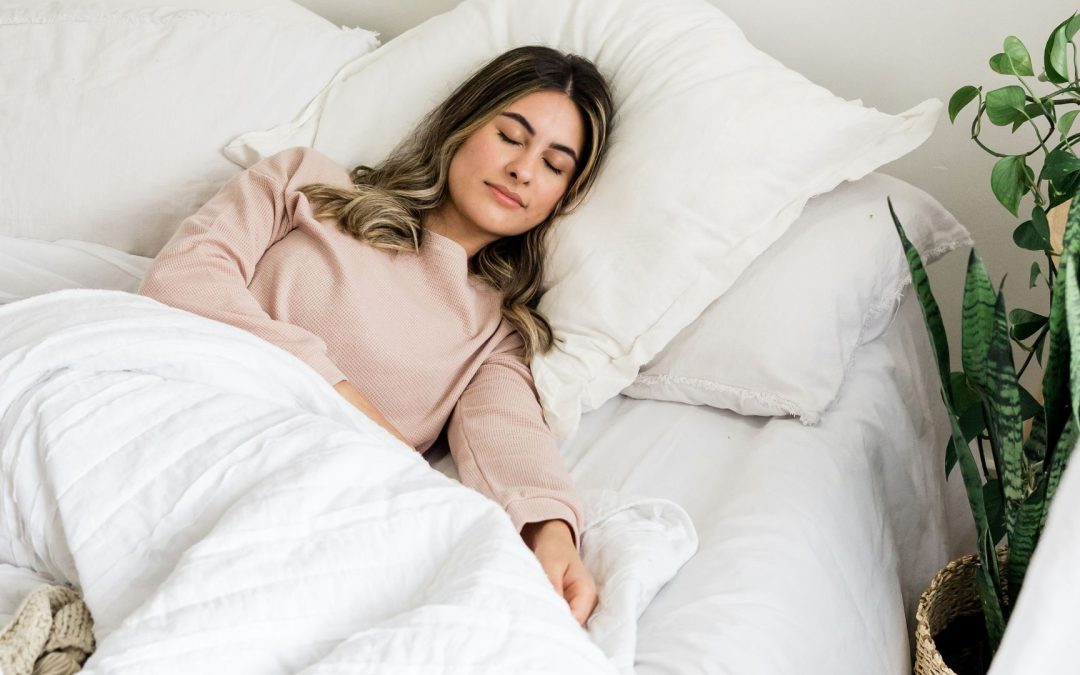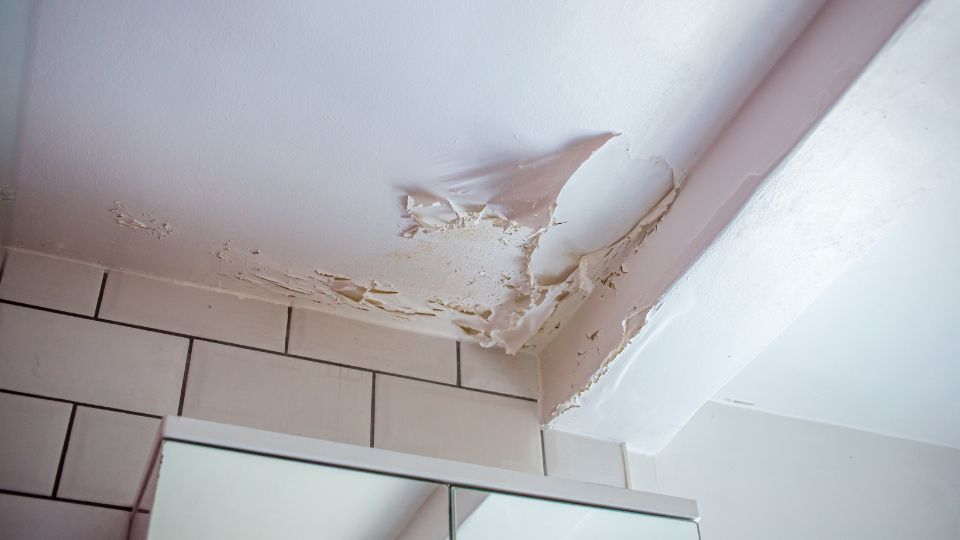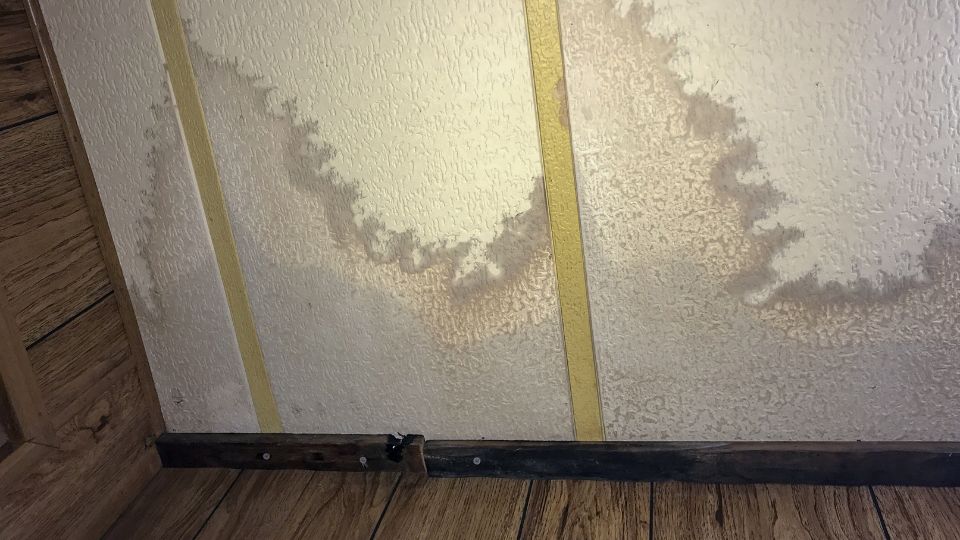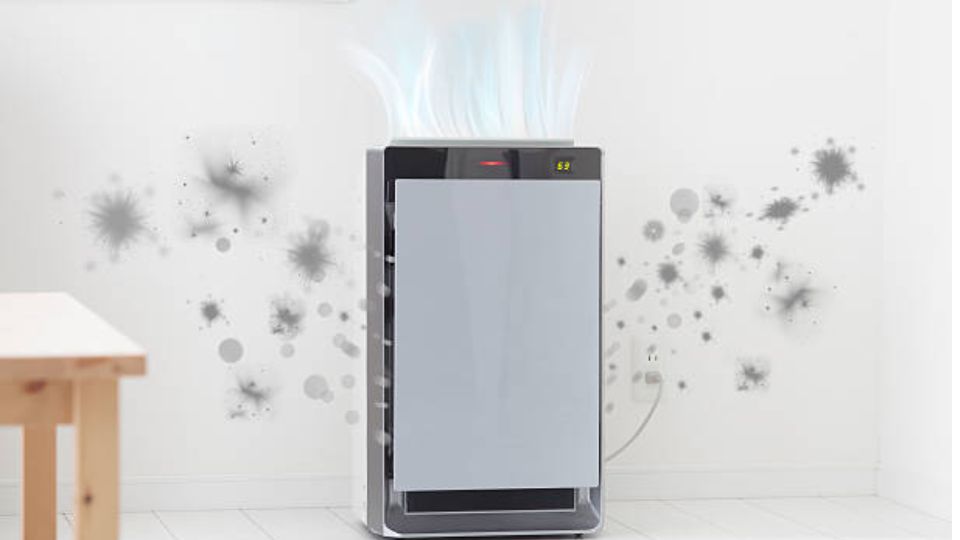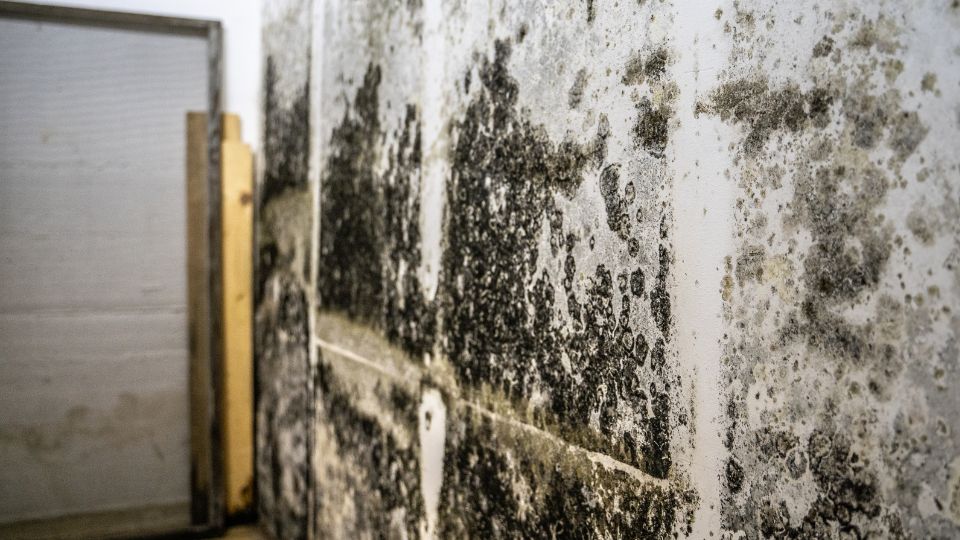
by Mold-B-Gone | May 9, 2023 | Killing Mold, Mold Facts, Mold Information
Bathrooms and kitchens are known for being places where mold grows. After all, there’s a lot of moisture in these areas. However, mold can also get into your room.
So if you’re sleeping in the same room as mold, you’re probably wondering, “Can you sleep in a room with mold in it in the first place?” After all, mold is known to cause some health problems, such as pneumonia, asthma, and other respiratory issues.
So let’s discuss what causes mold to grow and whether or not it’s safe to sleep in a room where it’s growing. And by the way, there is a difference between mold and general fungus. So read this article if you need clarification on these two topics.
What Is Mold?
Mold is microscopic spores that get into the air. These strains then attach to materials like cardboard, wood, wallpaper, and more.
Health Effects Of Mold
So what happens if you sleep with mold in your room in terms of health? And is it safe to sleep in a room with mold?
Well, you’ll be in for a lot of health issues unfortunately. Mold can cause allergic reactions, toxic effects, and irritations. While some mold is harmless, a lot of mold is deadly. If you breathe mold in for an extended period of time, it can cause infections, respiratory illnesses, and a poor immune system.
You should avoid sleeping with mold at all. It can compromise your sleep in addition to the hazards mentioned above. It can lead to poor sleep quality and REM, which means your body won’t recover or heal as well. So that being said, the answer to “Can you sleep in a mold bedroom” is no.
Signs That You Have Mold In Your Bedroom
Now that we know what happens if you sleep in a room with mold, let’s talk about how to detect it:
- Condensation on your windows
- A damp closet
- A musty odor
- A dark green or black area on your walls
If you notice any of these symptoms, call professional mold removal experts in Atlanta to come and inspect your bedroom right away.
How To Get Rid Of Mold In Your Bedroom
You deserve to sleep in peace for 8 to 9 hours a night. The last thing you want is mold in your bedroom, which causes health problems and sleep quality issues. So contact Mold-B-Gone right now if you want to improve your rest quality and eliminate airborne illnesses.
Also, we encourage ventilation in the meantime. Open your windows and get clean air flowing throughout your home, and use a dehumidifier. The less moisture that’s in the air, the less likely that mold spores can stick to your surfaces and grow.
Our experts will provide attention to detail when enacting the best solution and remediation to get mold out of your home.
Sleeping In A Room With Black Mold? You Don’t Have To
If you’re sleeping with mold in your room, our professional mold removal specialists can use thorough and powerful techniques to kill mold spores and keep them from spreading. Give us a call today, and bring peace of mind to your household.

by Mold-B-Gone | Apr 21, 2023 | Mold Facts
So imagine that you’re going to take a relaxing bath in your bathroom, but you start noticing a black spot on the ceiling in the bathroom. You may even notice a musty smell. Mold on the bathroom ceiling is no joke.
If you see any kind of dark green, brown, or black spots, then it’s likely that you have bathroom mold. This mold can spread quickly and cause severe damage to your home and to your health. So it’s important to remove this mold from the bathroom ceiling immediately by calling a professional service if you spot it.
That being said, it helps to understand why the mold is there in the first place. That way you can take preventative measures to keep it from happening the next time. So keep reading to learn why mold occurs and what you can do about it.
The Dangers Of Mold In Your Bathroom
Having mold on the bathroom ceiling above showers or other places is not a good sign. If you notice spores, mildew, or mold in your bathroom, it’s actually a very dangerous condition. Obviously, it can damage your wallpaper, tile, wood, and other materials. But more importantly than that, it can be very bad for your health.
Mold can get into your lungs. This can cause respiratory conditions like pneumonia. It can also worsen symptoms of conditions such as asthma. So if you have any pets, young children, or vulnerable people in your household, then you can’t afford to take any risks.
Additionally, mold can continue to spread. So if you see mold in the bathroom, it’s likely going to spread to other areas of the home and only get worse with time. If you don’t get it handled in the first couple of days, then it could get out of hand.
So that being said, what are some of the common symptoms that you might have mold in your home?
Symptoms Of Mold In The Bathroom
Dark Spots
If you notice green, black, or brown spots around the tile, bathroom, sink, or wallpaper, then you probably have mold. However, keep in mind that there’s more mold than you can see. There’s likely to be additional mold in the corners, under cabinets, and other moist or dark areas.
Musty Smell
Another main symptom of mold is a smell that reminds you of a dusty attic or damp basement. Normal household rooms shouldn’t smell like that, not even a bathroom. So if something smells off, then trust your instincts and call a professional mold removal company.
Peeling materials
If you have plaster or wallpaper that’s peeling, then that might not just be due to the water. Mold can get underneath the surface of these materials and break the adhesive structure. So this is a sign that it’s time to take action.
Mold Growing On Bathroom Ceiling? Here’s Why
There are some great ways to prevent mold in bathroom ceilings. Even worse, if it’s black mold, then this mold is even more dangerous. So you need to understand where it’s coming from so you can stop it.
Water Leaking From Roof
If you have a water leak coming from your roof, this creates the moisture that mold needs to thrive. This is one of the main reasons why you might have mold spores on your ceiling.
Not Enough Ventilation In The Bathroom
Try installing a bathroom fan or using it more if you haven’t already. Bathrooms are already moist places, so without ventilation, mold is likely to grow.
Lack Of Cleaning
You should be sanitizing your bathroom with cleaning chemicals and soap and water on at least a weekly basis. If not, the mold may not be washed away. Even just a small amount of water left behind from using the shower, sink, or restroom can give mold the environment that it needs to start populating.
Don’t Let Mold Take Over – Call the Pros Today!
There’s no time to waste if you notice mold in your bathroom. Instead of asking “why is there mold on my bathroom ceiling” the better question is how soon can a professional come out and remove it?
So call a mold removal service in Atlanta right now. At Mold-B-Gone, the experts are trained in the best ways to remove mold now and for good. That way you can enjoy a spotless home once again.
You won’t worry about spores in the air or damage to your home. Instead you can take a relaxing bath and spend your time how you really love to.

by Mold-B-Gone | Apr 11, 2023 | Mold Facts
If your house has experienced water damage, then there are a lot of issues that you might be facing right now. It can be time consuming and costly to repair siding, roofing, walls, appliances, and other items around your home.
However it can be even worse than that. If you don’t have a professional inspector at home for potential mold presence, then it can grow quite quickly after water damage occurs.
Mold loves damp, dark spots. So let’s talk about “how long does mold take to grow after water damage” and how to resolve the issue as soon as possible. That way you can restore your home to its natural beauty and avoid spending time and hassle dealing with this pesky fungus.
Why To Check For Mold After Water Damage
In this section, let’s talk about the dangers of house mold due to water damage and why it’s something that you shouldn’t play around with. There are several reasons that mold needs to be treated the second that you notice it.
Asthma and respiratory conditions
Mold mildew and fungi have spores. These spores get into the air. Once it circulates within the air inside your home, it can get into your lungs. If anyone in your family has asthma or another breathing condition, it can worsen their condition.
It can even cause severe illness or death. Even if you don’t already have some kind of allergies, it can still affect your respiratory system and cause pneumonia. This is one of the main reasons why mold should always be dealt with immediately.
Wall damage
From wallpaper to drywall to other types of materials, mold can be very damaging to your home. Ultimately, it rots and eats away at the materials in your home. This extends to carpets, wood floors, and other types of materials as well.
It’s much more costly to let mold run free than it is to fix it while it’s still small. The longer you wait, the more costly the repairs and replacements are going to be. So call Mold-B-Gone today and get mold removed if you notice any signs of it.
Mold can spread
While you may only notice mold in a small part of your home, like the garage or bathroom, that doesn’t mean it will stay there. Mold is incredibly infectious. It can spread very rapidly, especially if there’s water damage.
Mold thrives off of moist environments. So as long as there is water within your home, it has a means to reproduce and spread to the rest of your home. Like with many things, prevention is better than cure.
That being said, now that you understand the dangers of letting mold run its course, let’s talk about how long it takes for mold to actually form if you have water damage in a building.
How Long After Water Damage Does Mold Grow?
The mold colonies and microorganisms can grow rapidly. In fact, it doesn’t even take several days or weeks for it to grow. Many times mold can begin growing and germinating in the first 24 to 48 hours after water damage.
Mold colonies grow quickly with each passing hour due to the level of moisture. If you wait past the initial 48 hours, it becomes exponentially more difficult to get rid of the mold.
So the answer to “how long for mold to grow after water damage” is “really fast.” That’s why calling a professional mold removal service should be your first priority.
How To Remove And Prevent Mold?
If you notice a musty smell, moisture, cracking, peeling, or discoloration, then you probably have mold. If that’s the case, then there are a few things that you can do while you’re waiting for the experts to arrive.
Use a dehumidifier
This helps dry out porous surfaces where the mold likes to fester. Replace plaster and insulation. Porous materials should be replaced since they’re probably already compromised.
Remove water soaked items
Anything that’s been soaked or damaged with water should be removed and replaced in the home.
Scrub surfaces with disinfectant
Your tile, wood, and other surfaces should be scrubbed thoroughly to remove traces of the small spores.
Ventilate the area
Close the windows and put a fan on high. The more clean air that comes through, the less moist the area will be.
How Soon Does Mold Grow After Water Damage – Summary
If you feel like you might have mold or you do see clear signs of mold in your home, then take action. Reach out to Moldbgonega.com.
The mold removal company in Atlanta can inspect your home and take the necessary precautions to remove any signs of this dangerous fungi. You and your family deserve to breathe clean air and not worry about mold hazards or damage anymore.

by Mold-B-Gone | Mar 13, 2023 | Black Mold, Mold Facts
When it comes to mold, it is one of the biggest problems that homeowners face today. All types of mold can find its way into your home and stay around unnoticed. By the time you notice it, it probably means there’s much more mold hidden behind the scenes.
You might be wondering, do air purifiers help with mold? Well, in this article, let’s answer that question as well as talk about the importance of removing mold from your premises.
Do Air Purifiers Help With Mold?
You’ve probably heard a lot about these machines. So what’s the deal? Can air purifiers help with mold at all?
The answer to this question is yes, to an extent. However, like anything, they need to be properly maintained and cleaned. Even if you have an air purifier, mold can find its way into other areas of your house.
Mold is pretty sneaky, along with other facts about mold you might not know.
Do Air Purifiers Remove Mold? It Depends
Mold can get into your crawl space, your living room, your bathrooms, your ducts, and more. Keeping your home mold free certainly has a lot to do with reducing the humidity, but oftentimes it’s not enough.
Water damage, rain, leaks, and other things that you may not even be aware of can cause mold in your home. So therefore, the question of do air purifiers help with mold is difficult to give a straight answer to.
It’s sort of like asking if a band-aid can help a cut. Of course it can help, but depending on how deep the cut is, you may need an expert to take a look and help you further out.
A better question than “can a air purifier help with mold” is actually this:
“What is the best way to get rid of mold in my home?” And the answer to that is to hire professional mold removal experts in Atlanta.
That being said, here are the top reasons to consider mold removal services for your home.
The Benefits of Mold Removal Services
Identification
You may not be able to identify what kind of mold you have in your home. Mold ranges from benign and annoying to toxic and deadly.
Only expert mold removal specialists can tell you which one it is and properly clean your home to kill the mold and keep it from coming back.
Mold Is Difficult To Clean
You have to use the right chemicals, methods, and equipment to clean mold. Otherwise the spores will stick around and keep spreading.
Air Purification Is Not Enough
Air purifiers are excellent tools. However, they simply keep the spores from spreading around your home. If the spores are there in the first place, the mold has everything it needs to reproduce.
What’s The Best Air Purifier For Mold?
HEPA (High Efficiency Particulate Air) filters are effective for mold. They have high efficiency standards and capture over 99.9% of particles that are bigger than 0.3 microns.
Does A Hepa Filter Remove Mold?
This is a helpful type of purifier to have in your home. It can be a great starting point to reducing mold around your property. Your mold specialist can tell you more about it during your appointment.
Do Air Filters Help With Mold? – Final Conclusion
If you think you might have mold in your home, don’t hesitate any longer. It can cause health hazards and it almost never goes away on its own — even with air filters. Call the professionals at Mold-B-Gone today.
Let this expert mold removal service in Atlanta clear the mold from your home and ensure you and your family are breathing safe, fresh air.

by Mold-B-Gone | Mar 6, 2023 | Black Mold, Mold Facts
If you have mold behind your walls, it can cause several issues. It’s not just unsightly, it also damages your property. Additionally, it can cause health hazards and even be deadly.
Therefore, if you think you might have mold, don’t take the risk. Have Mold Removal Experts in Atlanta come and remove it today. That being said, what are some signs that you have mold behind your walls?
Signs That You Have Mold Behind Your Walls
Here are some common signs of mold behind drywall and other materials. If you notice black mold inside walls call mold experts immediately:
A Musty Smell Means There’s Mold Behind Drywall
Many types of mold have a musty odor about them. It makes your house have that basement odor. This means that there’s fungi somewhere in the walls or in your house.
If that’s the case, you should have mold removal specialists come and take care of it.
Your Wallpaper Is Peeling
Mold loves humidity. If your wallpaper is peeling, it probably means there’s enough humidity in the air to provide mold as well.
It’s a perfect combination for fungi to grow. So there is likely mold behind drywall sections.
Water Stains
Water stains mean that there’s water damage or leaks somewhere in your home. Anywhere you’ve seen water stains, there’s a good likelihood of some kind of mold growing.
This is one of the biggest tip offs when it comes to how to test for mold behind walls. It’s definitely something you should have checked out.
Spots On Your Walls
Small dark spots of brown or black, even fuzzy white indicate mold colonies. Sometimes you don’t even have to know how to check for mold behind a wall, it’s on the frontside in plain view.
Molds come in a variety of colors, so it’s best to have professionals tell you what variety it is. Therefore, they can get rid of it and keep it from growing back.
Health Symptoms
If you have symptoms like allergies, runny nose, sneezing, coughing, or illnesses, then this is something to take note of.
You shouldn’t be feeling that way in your home. Often these are signs that you have mold in the house that’s causing these allergies. If left unchecked, it can cause more advanced illnesses. You want to find out if you have mold behind your walls right away.
Mold Evaluation
Mold testing is the best way to see if you have mold. Experts at Mold-B-Gone in Atlanta have mold kits and various ways to test for every kind of mold there is. They can tell you how much mold there is, what type of mold it is, and what to do about it.
That way, they can go about removing the mold from your home and keeping you and your family safe.
How To Remove Mold From The Home
There are a couple ways to keep mold out of your home:
Use An Air Purifier
Try to keep your air free of microns and particles. This is how the fungi spores spread in the air.
Check For Leaks Or Water Damage
Avoid excess moisture in your home. Mold can often occur in basements, bathrooms, kitchens, or anywhere where pipes are present.
Contact Mold Removal Experts
Mold is no laughing matter. If you think you might have mold in your home, have the experts perform a preliminary check. If necessary, they can perform mold removal in a way that kills the mold spores.
They can also advise you on ways to make your home mildew and mold proof going forward.
Summary — How To Check For Mold Behind Walls
If you have mold, especially in the humid environment of Georgia, the problem is only going to get worse.
The smell, sight, and allergy symptoms make it obvious if you have mold. It can cause health issues, property damage, and more. Don’t hesitate to find out with certainty if there’s black mold or other varieties.
Contact the mold removal experts today at Mold-B-Gone. That way you can have peace of mind that that nasty fungi isn’t coming back any time in the near future.
